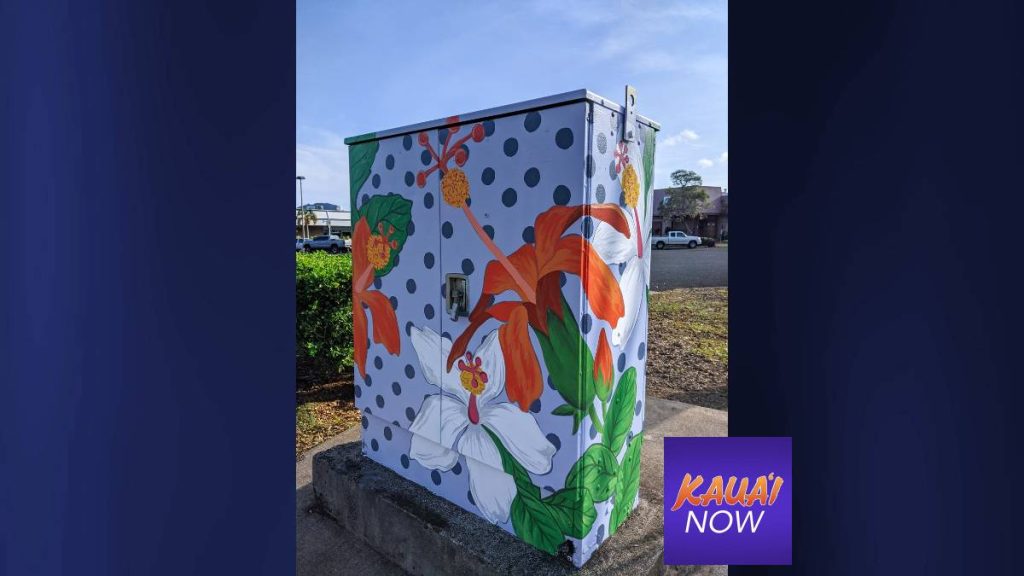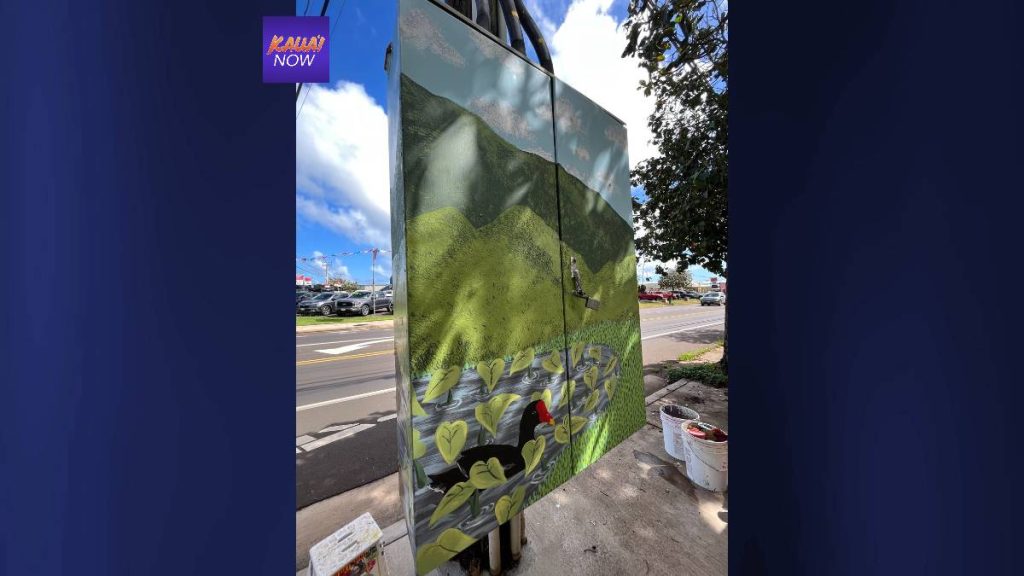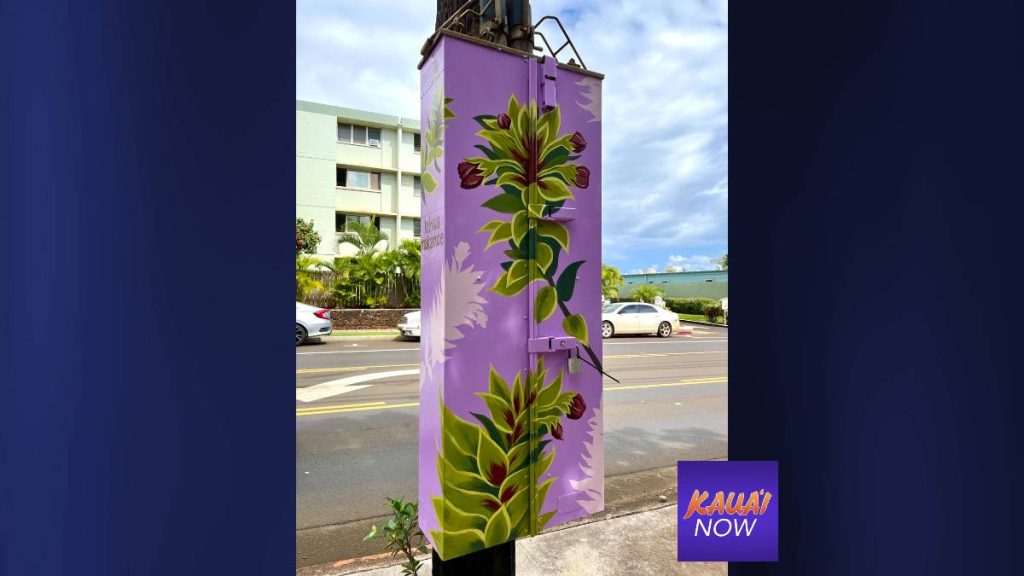Native species return to Rice Street via new murals
Artist Holly Ka’iakapu loves the flamelike beauty of koki‘o ‘ula, a red hibiscus native to the lush green forests of Hawai‘i. The first time she encountered the flower in the wild “it stopped me in my tracks. It was so vibrant and beautiful.”

It also is rare. Only six subpopulations of koki‘o ‘ula exist in the world today, according to the IUCN Red List, a resource that assesses the extinction risk status of animal, fungus and plant species throughout the world.
But visitors to Rice Street in downtown Līhu‘e may have noticed a new variety of the flower has cropped up in front of Rice Shopping Center.
Ka‘iakapu and two other muralists, over the course of several years, have painted native flora and fauna on nine Hawaiian Telcom fiber distribution hubs along Rice Street.
The project is a collaboration between the Rice Street Business Association, Hawaiian Telcom and Mo‘olelo Murals, a public art group led by Ka’iakapu. The street art is part of an effort to reintroduce native Hawaiian culture to one of the most developed spaces on Kaua‘i.
Three of the project’s paintings were completed this fall:
- Koki‘o ‘ula and the federally-endangered koki‘o ke‘oke‘o (Hawaiian white hibiscus, one of only two hibiscus species in the world known to produce fragrant flowers) is in front of Rice Shopping Center on Rice Street.
- Lehua makanoe, a shrub endemic to the Alaka‘i Swamp area of Kōke‘e, is across from the Līhu‘e Townhouses on Rice Street.
- Naupaka kahakai, a flower associated with a moʻolelo (story) of two lovers torn apart by the goddess Pele, is on the corner Kalena and Malama streets.
“These plants and animals are important to native Hawaiian cultural beliefs and practices as they carry mo‘olelo about sustainability, interconnectedness and respect for all lifeforms,” said Addison Bulosan, president of the Rice Street Business Association and newly-elected county councilmember, in a recent RSBA press release.
Hawaiian Telcom paintings on Rice Street also include depictions of vital plant-and-animal relationships, such as those between the critically-endangered ʻālula and its extinct pollinator, the fabulous green sphinx moth; and the ōhiʻa lehua and the ʻiʻiwi, an endangered honeycreeper.
Others feature more native birds, like the ‘alae ‘ula, also known as the Hawaiian gallinule or moorhen.
The story of the ‘alae ‘ula’s legendary origin helped earn it a place on the Hawaiian Telcom box at the corner of Rice and Hale’lani streets. The demigod Maui is said to have marked the waterbirds with their signature red “flames,” after learning their secret of fire on behalf of humankind.
“Rice Street is a very urban space, so bringing these native species that we most likely don’t see on a day-to-day basis, it’s a great opportunity to see them more often,” Ka’iakapu said. “Maybe we know it’s a moorhen. But what is its Hawaiian name? Why does it have a flame? Hopefully it can inspire people to to dig a little deeper … We’re just planting a seed for them.”
Public art is important, according to Ka’iakapu.
“In a museum or gallery, you’re only reaching a very particular audience that happened to walk through the doors,” she said. “In public spaces, you’re able to reach a much greater audience, and there’s a lot of opportunity to create something that is a true reflection of that community and that space.”
A comprehensive list of Mo‘olelo Murals’ Hawaii Telcom paintings, including photos and locations, can be found here.
More information about Mo‘olelo Murals, a program operating under the Kaua‘i community-based nonprofit Kamāwaelualani, can be found here.
Ka‘iakapu says Mo‘olelo Murals has several tentative projects planned throughout 2023.









